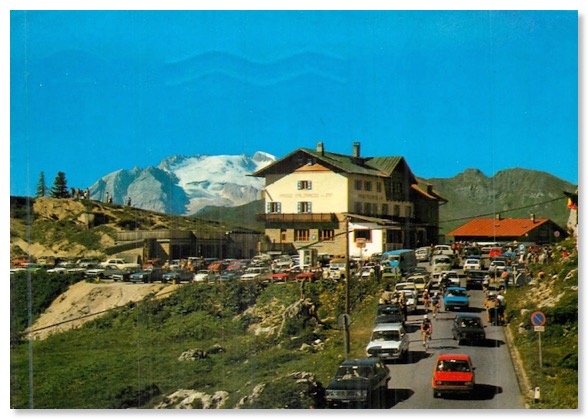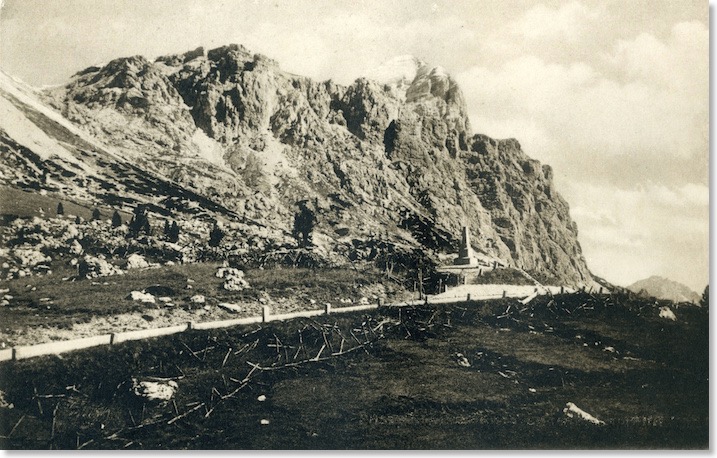
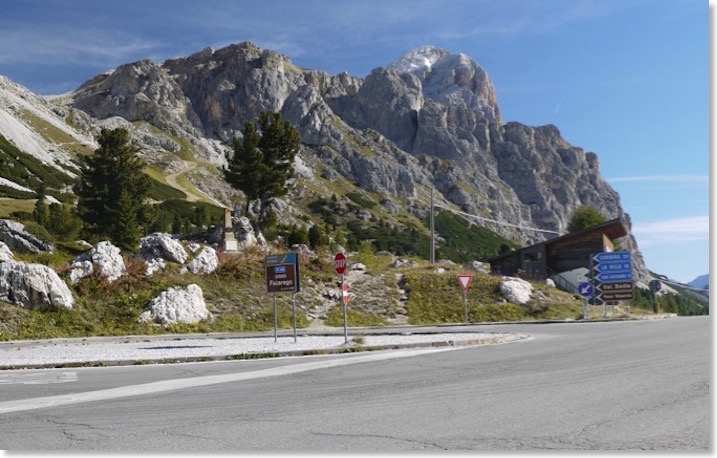
Probably because of the close proximity of the WW1 fighting to this pass summit, the area has been extensively photographed by postcard producers over the years. I have only drawn on a small part of my collection for this page of the web site! There are considerable overlaps between the views on this page and those for Photo 27 which follows.
That there are still barbed wire entanglements in the foreground and middleground of Zardini's photo above probably places the original picture at some time not long after the end of WW1 fighting in this area, but just after the original war memorial was erected. It isn’t possible to see the marble plaque on the memorial in Zardini’s photograph. My view is that this was added after 1925. The quotation on it was not written until 1925, and in an early postcard on my web page for Photo 27 it is clearly absent. It also seems likely that by 1925, the WW1 barbed wire would have been cleared.
The Road has been re-aligned and widened several times since then, and numerous buildings erected that were not there when Zardini took the photograph. These include a large cable-car station (just out of shot to the left of my own picture above). However, the area remains readily recognisable.
The war memorial there today contains no date of its erection, and parts of the inscriptions on it are now in poor repair These photos compare a Ghedina postcard view of the memorial in the 1930s with how it looked in 2011:
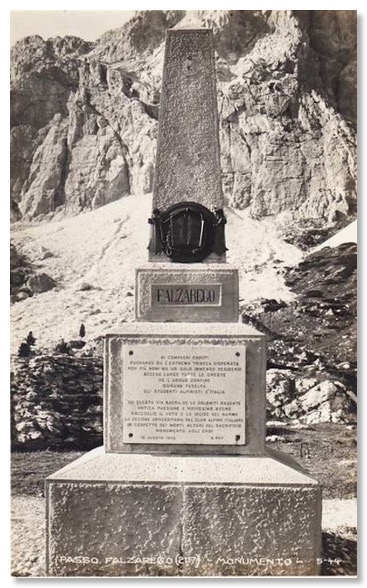
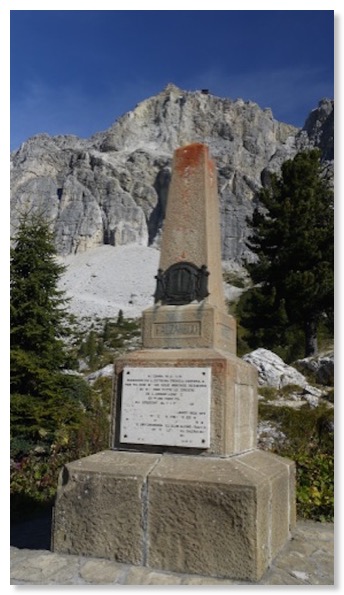
The inscription, commemorating the World War 1 fighting and based on a 1925 tribute by climber, photographer and Alpine historian Guido Rey is no longer complete.
I have this Ghedina postcard, which carries a pencil date of 7 August 1928, when less had altered. The stone steps up to the memorial are still in place. These have been lost to road widening over the years since then:
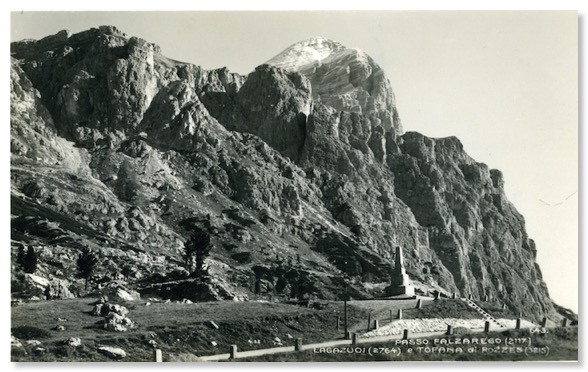
In the Zardini guide I acquired in January 2013, a different photo is used:
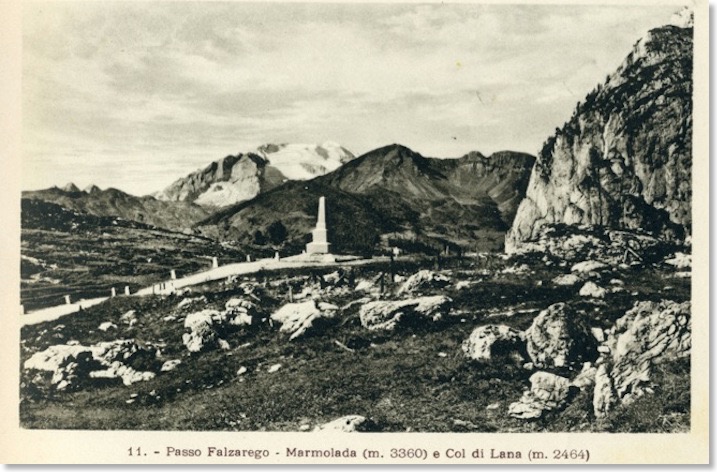
It is a view across the War memorial site in exactly the opposite direction to the one used in the first guide. The peak in the background is the Marmolada.
This is a Zardini postcard from about the same time which looks in the same overall direction. Note that there are, as yet, no buildings at the top of the Falzarego Pass, meaning that these photographs are likely to date from the very early 1920s:
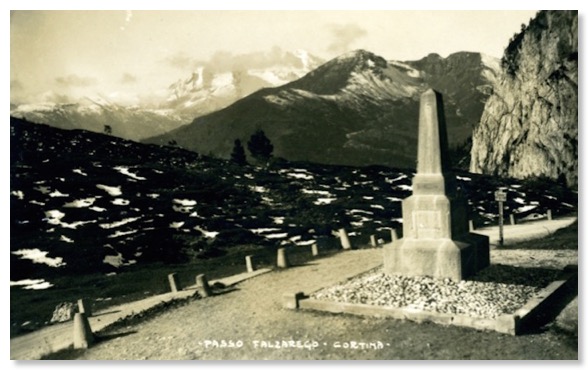
In the 1930s or 1940s the view looked like this on two postcards. The views take a wider angle, but are otherwise very similar. They are from two different postcard companies. The first of the cards is hand-dated by the sender and postmarked 9 August 1949, the second in 1956. However, both will have been photographed earlier than that. The war memorial can be seen in both views:
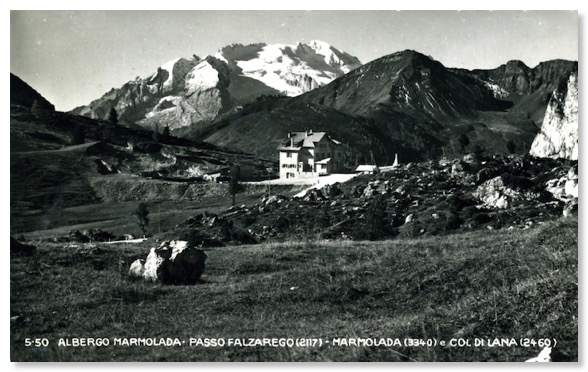
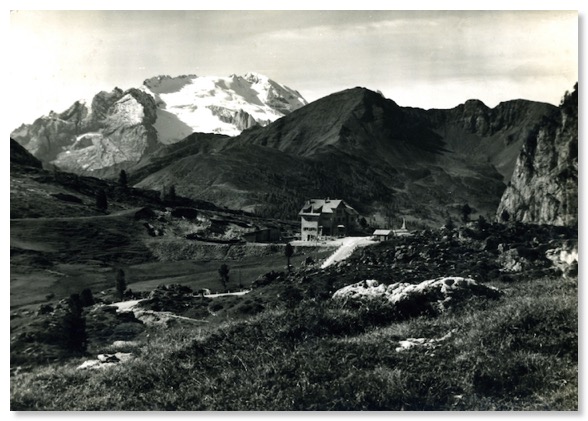
The view had not changed much by the time this postcard was sent, in August 1959:

The nearest I can come from my own archive of photos is this, taken from several hundred metres higher, near the Lagazuoi Hut, but looking in the same direction as Zardini’s photo:
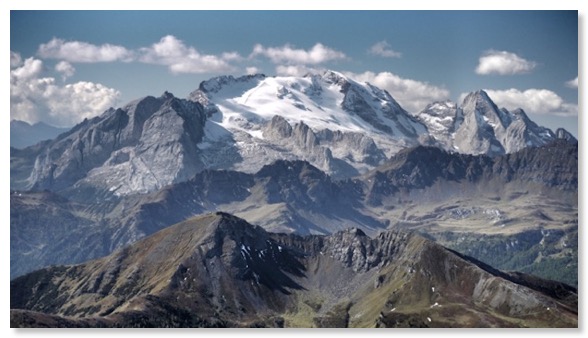
The building at the head of the pass was called the Albergo Marmolada. One might have thought it would be called the “Albergo Passo Falzarego”, or similar, but that name had already been taken. See Photo 28 for more about this.
By the mid 1960s, the Albergo Marmolada was joined by a cafe-bar, on the opposite side of the road, at the top of the Pass, here seen on two cards. One is undated and one was sent in 1965, although both pictures were probably taken a few years earlier. Both photos come complete with the ubiquitous Volkswagen cars of the ever-present German visitors to the area at that time. The Lagazuoi cable car station had recently been built by then, but is out of shot to the left:
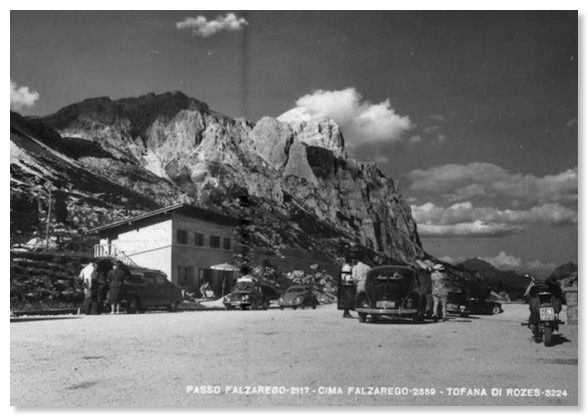
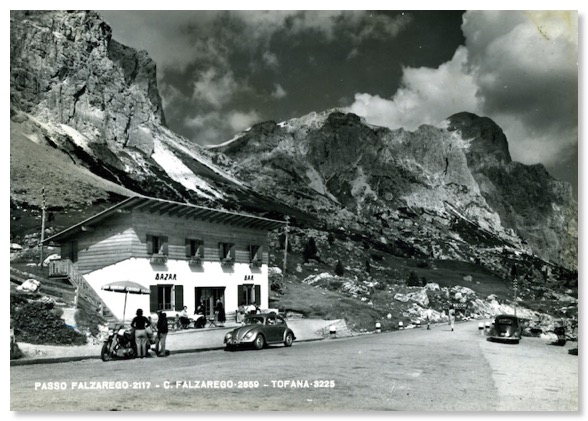
Nowadays the building is occasionally open as a gift shop. I visited in September 2013 on a very quiet day. The steps beside the building are not the original steps to the war memorial. They are later in date even than the black and white photo of the building below, which does not show them. The gradual encroachment of road widening can be seen by comparing the two photos:
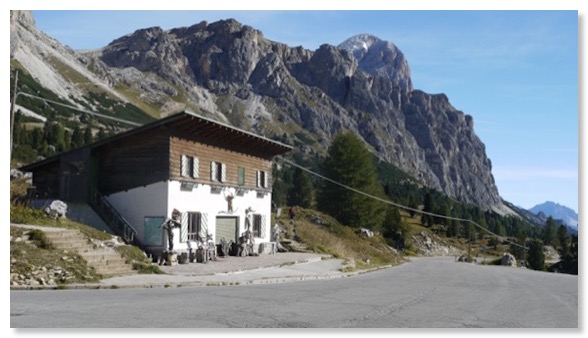
Here is the same building again, in this postcard sent in 1968. The obelisk can just be seen in this picture, to the left. The cables visible against the sky on the right of the photograph are those of the Falzarego - Lagazuoi cable car. The cable car station itself is hidden from view. It was smaller then than it is nowadays:
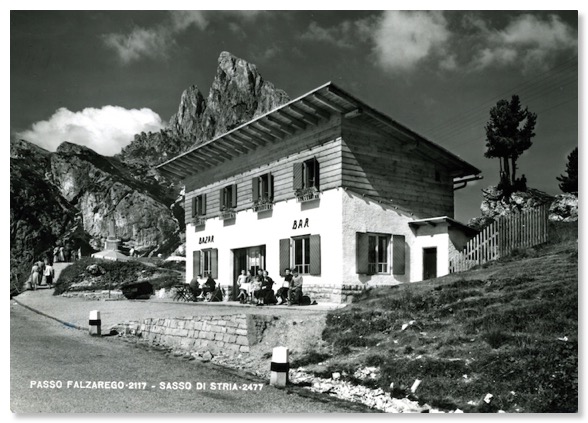
This is a gaudy Ghedina postcard sent in the early 1970s. There was a petrol station next to the Albergo Marmolada at this time. The pumps can be seen:
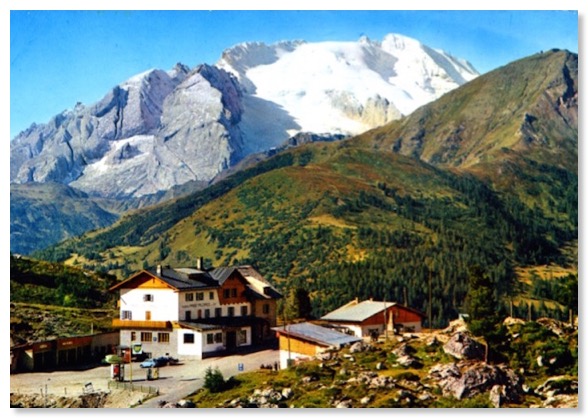
This postcard, by Ghedina of Cortina, is one of the very best photographs I have in my collection. It is a masterpiece of black and white art. The date is about 1965, and the petrol station is very obvious. It is also the first photo in my postcard collection to show the Falzarego-Lagazuoi cable car station, on the right.:
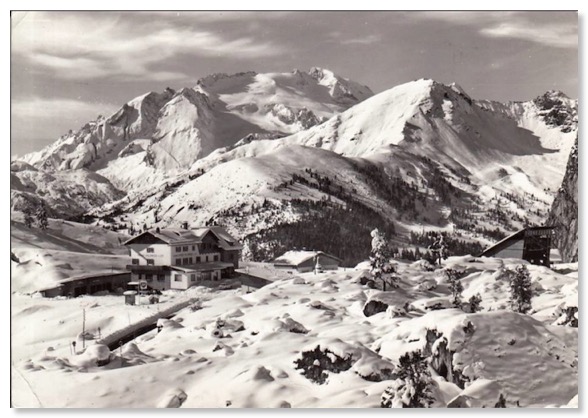
By the early 1970s, this was the view:
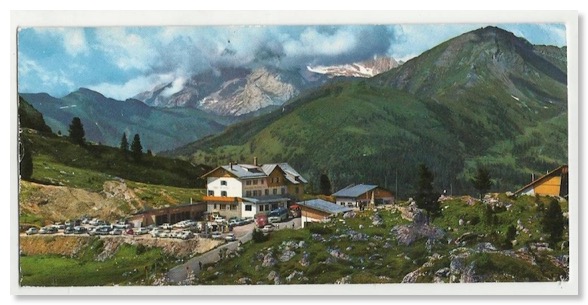
The earliest view I have of the buildings at the top of the Falzarego Pass is in this postcard from some time in the 1920s:
![1920s Falzarego Pass [2]](files/1920s-falzarego-pass-005b2005d.jpg)
The head of the Falzarego Pass was a very frequently photographed view for postcards in the 1950s and 1960s. I have put these card photos in approximate chronological order. During this time, the building’s name changes from the Albergo Marmolada to the Albergo Passo Falzarego. With the destruction of Menardi’s at Col Gallina in 1951 (see Photo 28) there would no longer have been any confusion about names:
![1960s Falzarego [5]](files/1960s-falzarego-005b5005d.jpg)
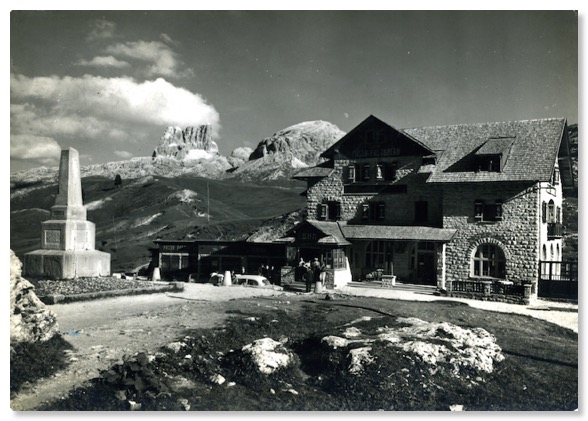
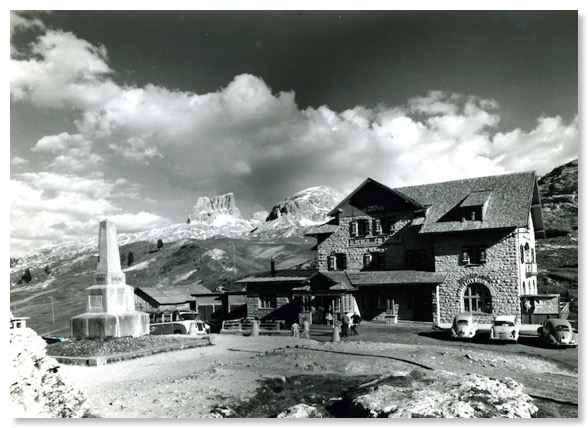
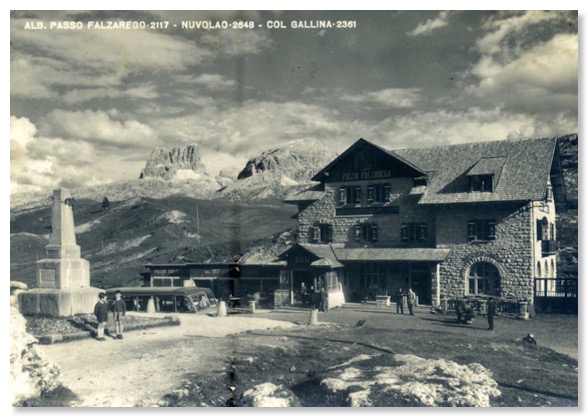
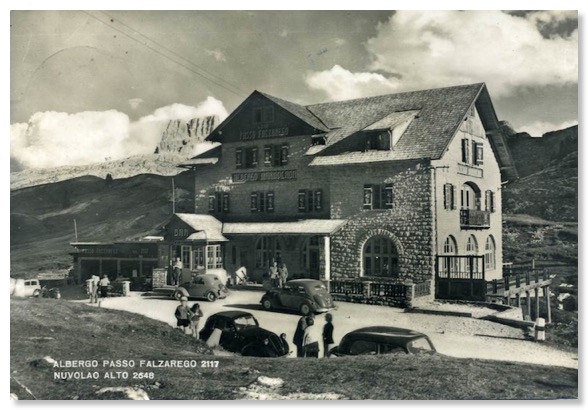
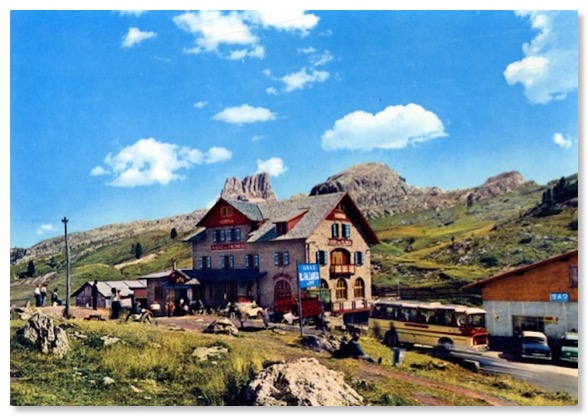
![1960s Falzarego [2]](files/1960s-falzarego-005b2005d.jpg)
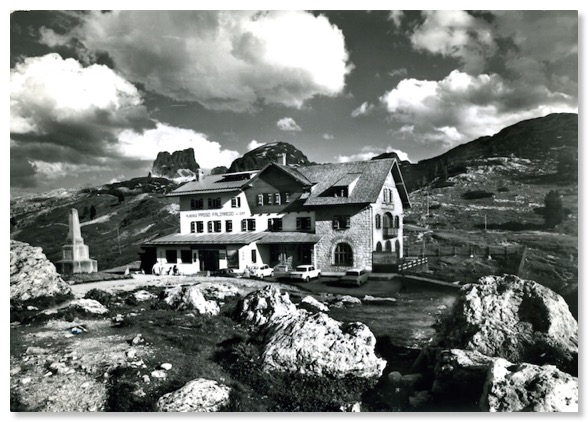
Here is my view of the same scene in 2013:
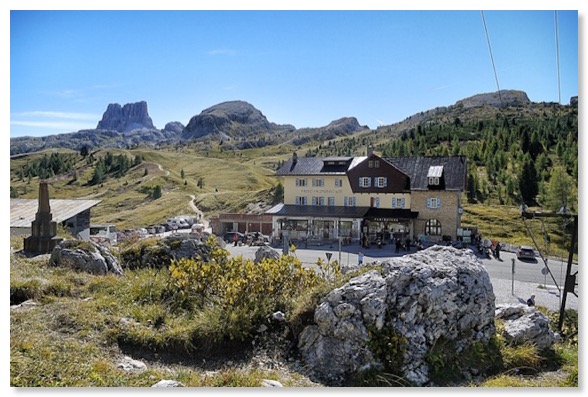
There were many postcard photos from other angles too. Here are two more postcard views from the 1940s and 1950s:
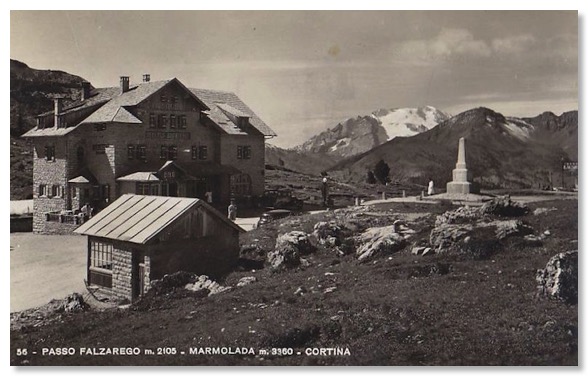
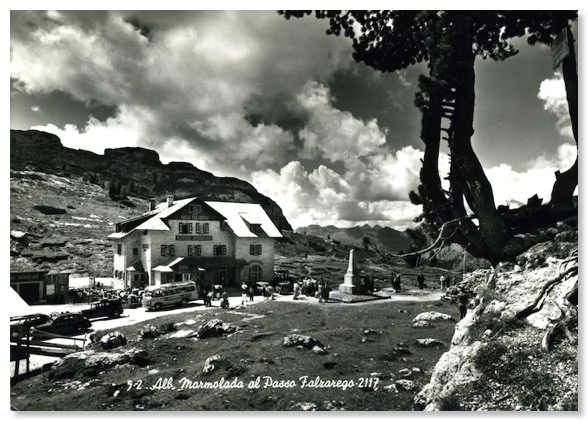
The first of the cards below is said to be a 1920s view. The car in the second postcard looks 1940s. When these were taken, the building was still known as the Albergo Marmolada, and had been enlarged. The road heading off left in the second photo goes over Passo Valparola and down towards Corvara. There is no sign of such a junction in the first:
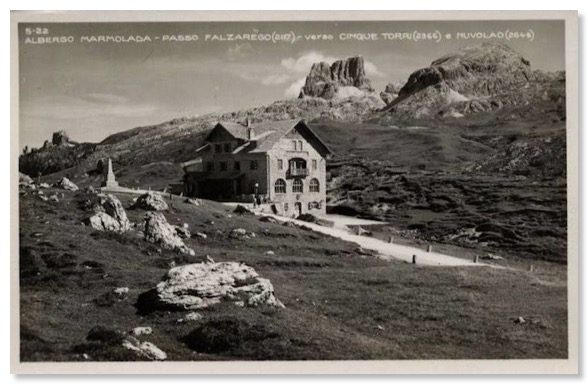
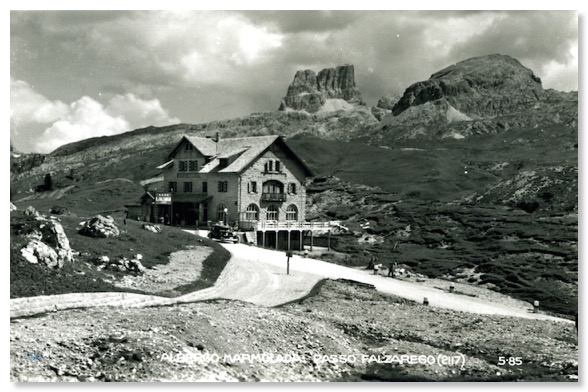
This next pictures are quite similar and, despite the impression hand-colouring gives one of them, I think they are later photos. The junction seems to be nearer the Albergo, narrower, and bounded by a neat bank reinforced with laid stones. In these photos, the building seems to have adopted its present-day name, but viewing the postcard under a lens shows it says “Albergo Falzarego” above the entrance porch, and “Albergo Marmolada on the wall above the balcony. There was no cable car station at this time, and the second card shows only a modest gap between the war memorial and the road junction:
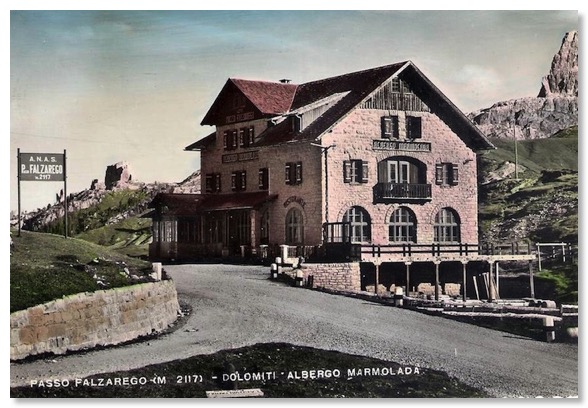
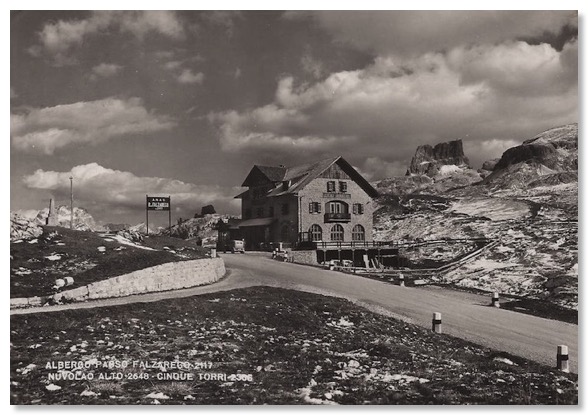
Subsequently, as this 1966 view shows, the corner was very considerably altered, with a mass of ground removed and levelled to make the car park for the cable car station. The war memorial is apparently perched on the edge of excavations for the car park:
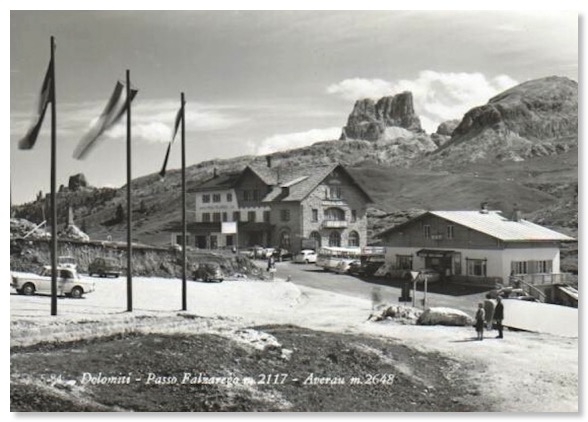
A similar bank marks the edge of the car park in this 1970s photograph. The war memorial is just out of shot to the right. The cable car station was by now well-established:
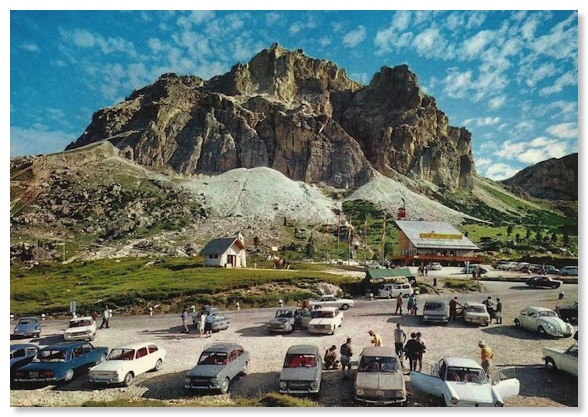
Here are three more postcard views of The Road at the Falzarego Pass in the late 1960s/early 1970s, showing what some might call “progress”:
![1960s Falzarego [3]](files/1960s-falzarego-005b3005d.jpg)
![1960s Falzarego [4]](files/1960s-falzarego-005b4005d.jpg)
